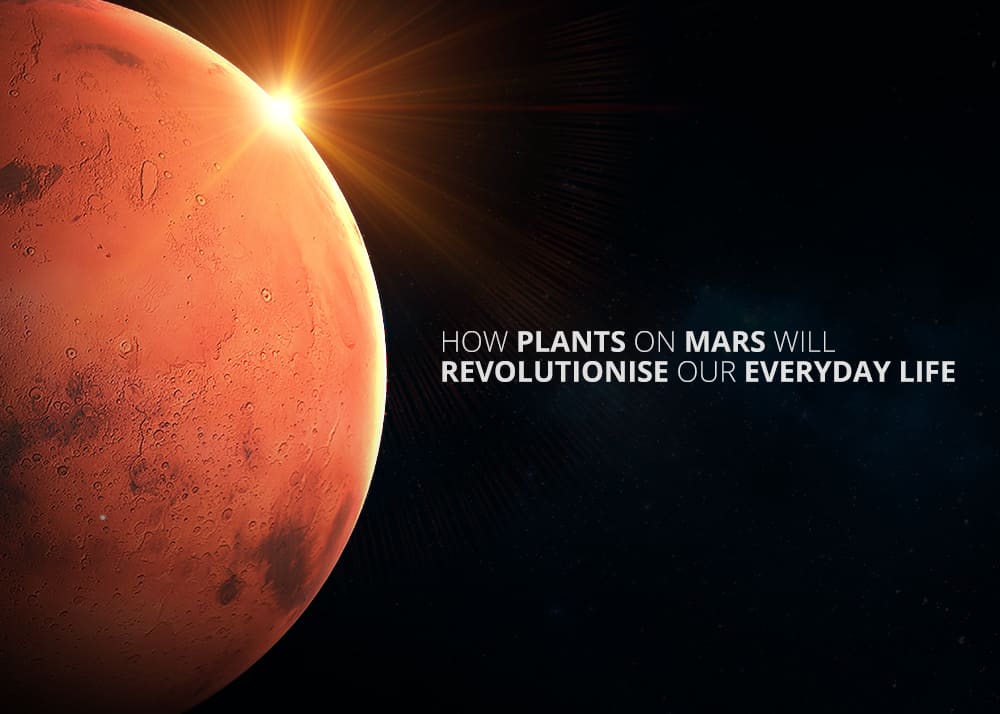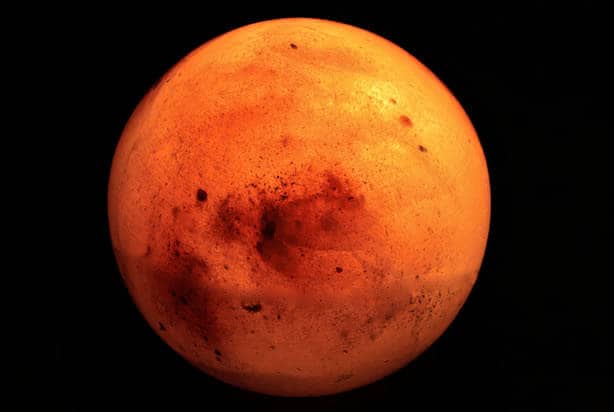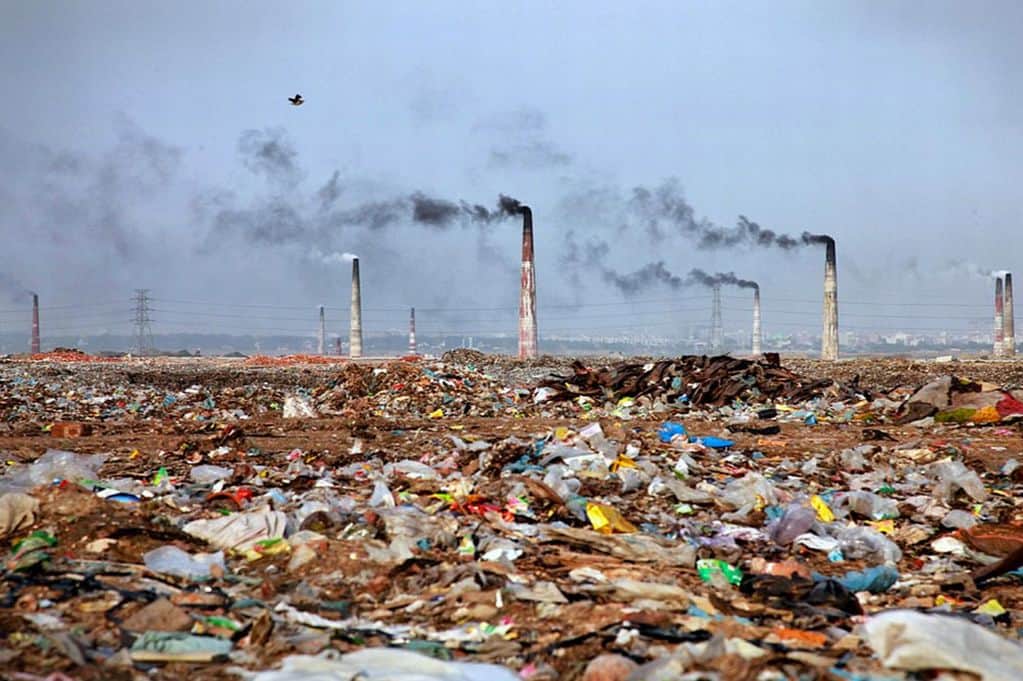Growing food will be critical to long-term human missions to Mars.
Is it time to pack our gardening gear and start travelling to Mars for some must-do garden prepping? Not so fast, but not so futuristic, either.
In August 2015, astronauts on the International Space Station ate the first vegetables grown in space, and in January of this year, the first zinnias bloomed. This crop experiment began in November of 2015 when NASA astronaut Kjell Lindgren activated the Veggie system and its growing “pillows” containing zinnia seeds. The challenging process to grow the zinnias provided an opportunity for scientists on Earth to further understand how plants grow in microgravity, and for astronauts to practise doing what they’ll be tasked with on a deep space mission: autonomous gardening.
Though space agricultural technology hasn’t quite reached the level of that witnessed in The Martian, overcoming the challenges presented by zero-gravity to grow plants was a victory in itself.
The head of SpaceX and Tesla Elon Musk has proposed sending a greenhouse full of edible plants to Mars to inspire the creation of a planet fit for long-term colonisation.
And the billionaire founder is quite vocal about his plans to conquer the red planet – even going so far as to say the move ensures humanity’s survival.
What are the Benefits of Planting On Mars?
The benefits of planting on Mars are numerous. If we’re able to successfully travel to Mars and plant our own food, it would be extremely cost-efficient. Hauling loads of food to survive a mission wouldn’t be necessary, since the food would all be grown on the red planet.
Crops do more than provide food, and if we were to grow 100 percent of our food in a closed system, the photosynthesis of the crop plants would keep the oxygen and carbon dioxide in perfect balance. But plants do not automatically grow faster to provide extra oxygen, so we need buffers to stabilise their concentrations.
Optimising the mass of these buffers is a huge challenge. They must be big enough to sustain life through times of instability, and yet small enough to be economical. For centuries, our massive oceans have been our buffer. Unfortunately, there are no oceans on Mars.
What are the Challenges of Planting on Mars?
A challenge with growing food on Mars is in regards to an adequate water supply. Plants use at least 200 litres of water to produce a kilogram of food, but the good news is that plants recycle and filter water all on their own. Though as long as we grow our food in a closed system, we will have ample clean water — no high-tech filtering systems are necessary.
Martian soil has perchlorates, a type of salt that’s hazardous to the human body. The perchlorates would either make it more difficult for plants to grow or would make the plants toxic. (Toxic plants would end up being worse than plants that won’t grow, especially on a foreign planet!) The solution is actually very simple, which is, you can literally wash these out of the soil. To do so, wash the soil, soak it in water, and the water would wash the perchlorates away.
Another major challenge is getting enough light for photosynthesis. Crop plants cannot survive without bright light unlike houseplants. A well-lit office has less than 1 percent of outside sunlight and less than 3 percent of the minimum light needed to grow potatoes or other crops. Also, Mars is 1.5 times farther from the sun than the Earth and, although its thin atmosphere minimally filters solar radiation, it has only 60 percent of our light intensity at the surface, which means reduced electric power and reduced photosynthesis.
So Can We Make the Red Planet Green?
On Mars, the average temperature is minus 84 degrees Fahrenheit. There are high levels of radiation and dust storms, plus an atmosphere which is 100 times thinner than Earth’s, made mostly of carbon dioxide. With these stressful conditions prevalent, crops would have to be planted under controlled conditions, in domes.
Growing plants out in the Martian elements, and not in a temperature- and air-controlled greenhouse, would be a challenge. Some scientists have said we should make Mars more like Earth, and even if it’s been ethically accepted to “terraform” Mars, it would be hundreds of years before the thin Martian atmosphere could be transformed into a similar atmosphere.
In order to recreate that atmosphere, Mars explorers would need to seed Martian soil with oxygen-producing cyanobacteria, lichens and microbes, and it would take hundreds of years for them to produce enough oxygen and nitrogen for such an atmosphere. Though, to note, it did take hundreds of millions of years for Earth’s oxygen levels to stabilise.
Since Mars lacks a magnetic field to shield the planet from solar radiation, solar wind would be consistently blowing the atmosphere away while the microbes were working hard to recreate such an atmosphere.
Martian winters can be a freezing -207 degrees Fahrenheit, so even if people could figure out how to generate an atmosphere faster than it disappeared, this would present quite the challenge. Though it is possible that people could tailor an atmosphere with greenhouse gases that trap heat, Mars is farther from the sun than Earth is, so it would still likely be colder than Earth on average.
How Much Longer Can Earth Really Support Life?
Some climatologists argue it may be too late to reverse climate change, and it’s just a matter of time before the Earth becomes uninhabitable. Planting on Mars remains a feasible idea with quite some potential, but it does take some very precise planning and dedication. If Earth will become unsuitable for living in due time, we’re going to need to find a new planet to reside on, or else.
Proponents of Mars colonisation talk about “terraforming” Mars to make it more like Earth, but at the moment, we’re “Marsforming” Earth by making our atmosphere poisonous and destroying all of our natural resources.
Whilst the need for a new planet may (or may not, if we make some major changes) be necessary in the near future, finding ways to correct the atmospheric issues with Mars will show massive progress for us here on Earth, as our atmosphere deteriorates after to years of pollution and environmental unjust.





